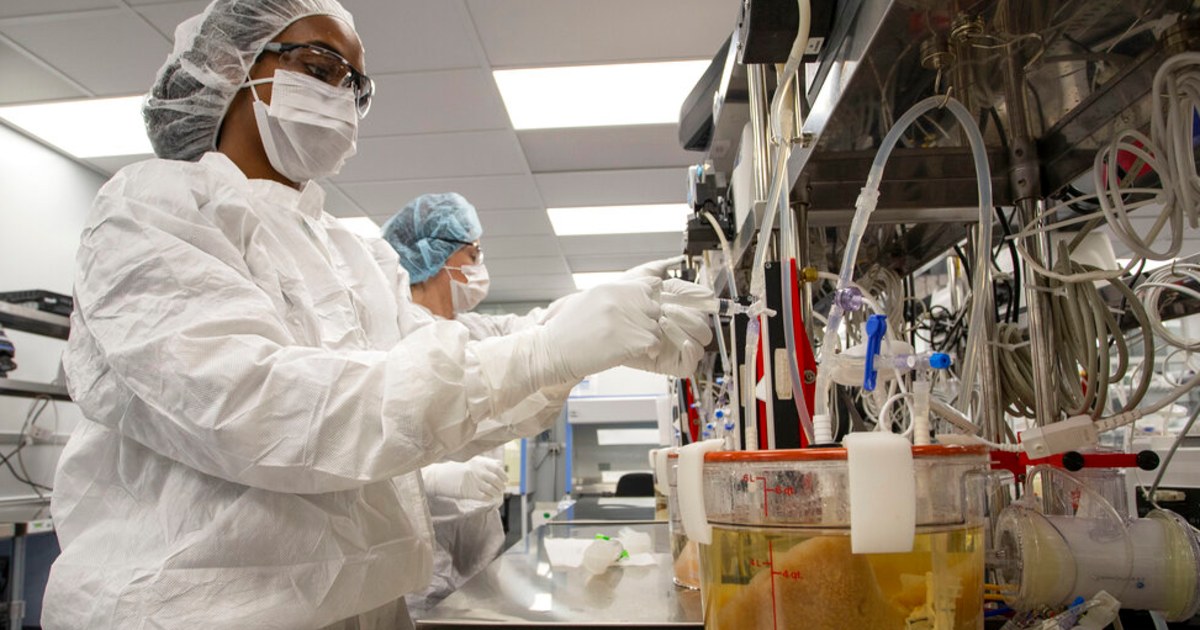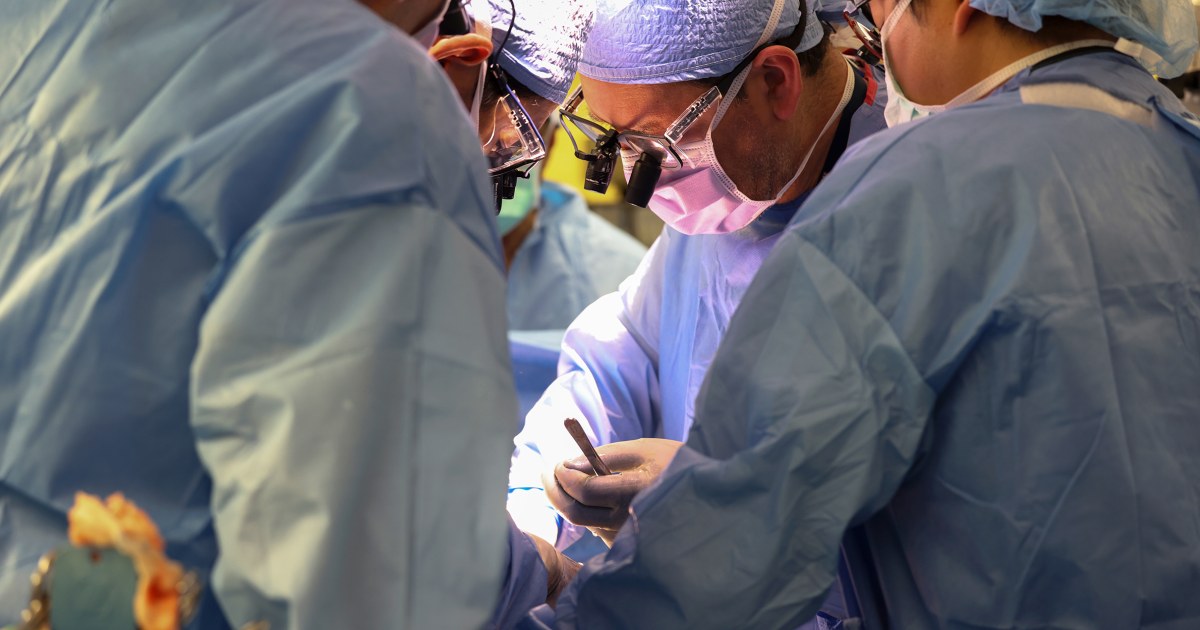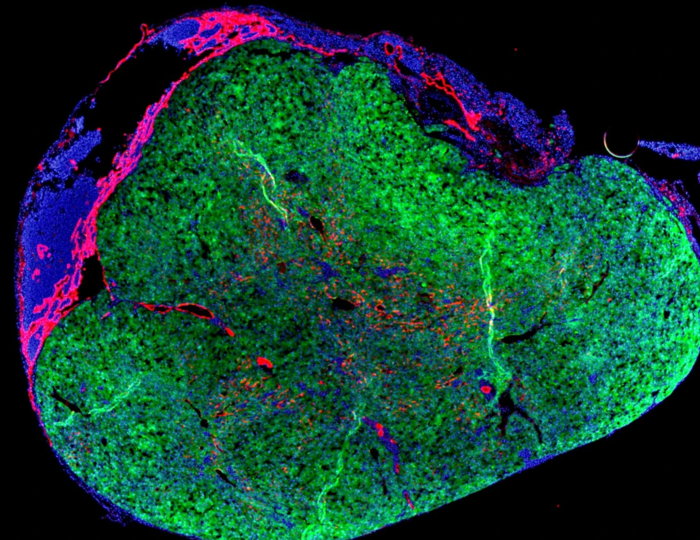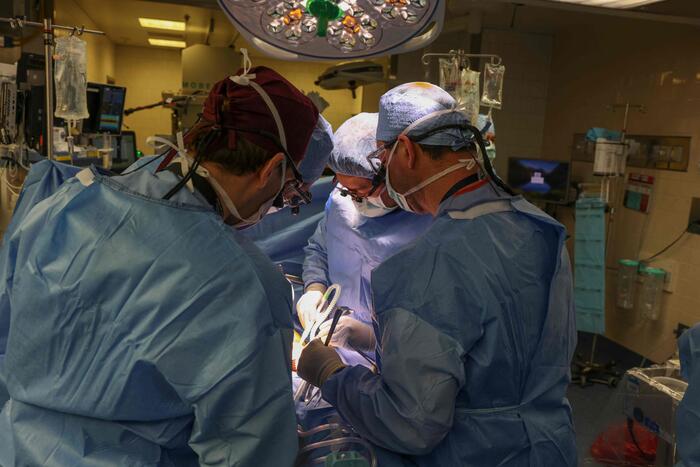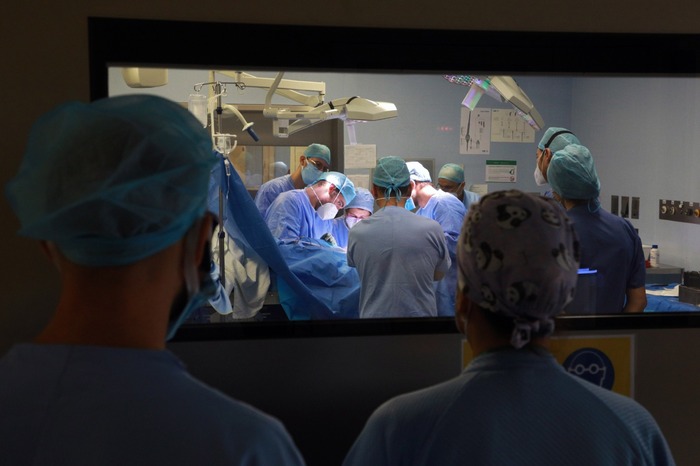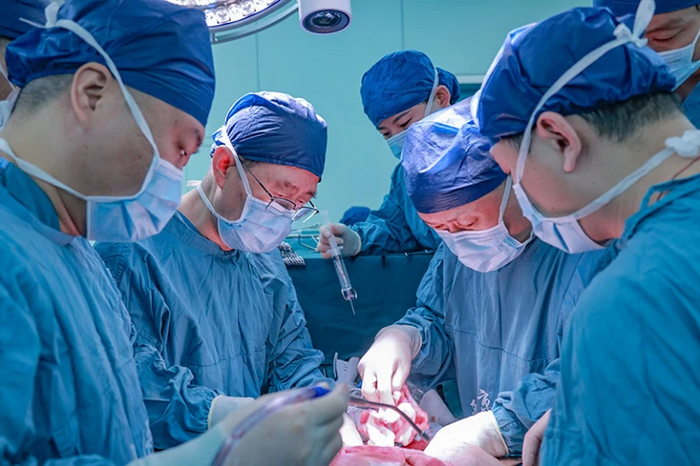By Lauran Neegaard -
The Associated Press
In a large jar floats a ghostly figure, once the reddish-brown color of a healthy organ, and now semi-translucent with white tubes resembling the branches of a tree.
It is about a pig's liver that is gradually transformed to look and act like that of a human
, as part of an intense quest by scientists to alleviate the shortage of organs for transplantation in the country through organ bioengineering.
The first step of the workers of this laboratory, located in the suburbs of Minneapolis, is to shampoo the porcine cells that made the organ work, whose color disappears as they dissolve and are eliminated.
What remains is a rubbery framework, a honeycomb structure of the liver, with empty blood vessels.
A pig liver with cells removed in a Micromatrix lab. Andy Clayton-King / AP
Then, human liver cells—taken from donated organs that cannot be transplanted—will be reintroduced to restart the organ's functions.
“We basically regenerate it
,” explains Jeff Ross, CEO of Miromatrix.
"Our body will no longer see it as a pig's organ."
[An eye implant made from pork protein helped 14 blind people regain their sight]
It's a bold claim.
Sometime in 2023, Miromatrix plans to run first-in-human tests with a bioengineered organ to start proving it.
If cleared by the Food and Drug Administration (FDA),
the initial experiment will be performed outside of a patient's body
.
The researchers would place a pig-like liver next to a hospital bed to temporarily filter the blood of someone whose liver has suddenly failed.
If that novel "liver assistant" works, it would be critical to ultimately attempting a bioengineered organ transplant, likely a kidney.
First man transplanted with pig's heart dies two months after surgery
March 9, 202200:28
“It sounds like science fiction, but you have to start somewhere,”
said Dr. Sander Florman, chief of transplants at Mount Sinai Hospital in New York, one of those already planning to participate in the liver-support study.
“This is probably more of the near future than xenotransplantation,” that is, directly implanting animal organs into people.
More than 105,000 patients are waiting for an organ transplant in
the United States.
Thousands will die before their turn comes.
Thousands more do not even make the list, considered too remote a possibility.
“The number of organs that we have available is never going to keep up with the demand,” explained Dr. Amit Tevar, a transplant surgeon at the University of Pittsburgh Medical Center.
"It's our frustration."
[Scientists Resurrect Animal Cells, Blur the Line Between Life and Death in Key Transplant Experiment]
That is why scientists look to animals for another source of organs.
In January, a Maryland man lived for two months after receiving the world's first heart transplant from a pig, an animal genetically engineered so its organs would not trigger an immediate attack by the human immune system.
The FDA is studying the possibility of authorizing other xenografts with kidneys or hearts from genetically modified pigs.
Organ bioengineering is remarkably different: You don't need special pigs, but organs left over from slaughterhouses.
“In the long term, this will very likely contribute to the development of organs that we can use in humans,” says Tevar, from Pittsburgh.
He is not involved in the Miromatrix and cautions that the planned out-of-body tests are a first step.
Why is the waiting list for organ transplants so long in the US?
Aug 15, 202201:59
The Miromatrix approach stems from research conducted in the early 2000s, when regenerative medicine specialist Doris Taylor and Dr. Harald Ott, then at the University of Minnesota, pioneered the complete decellularization of a woman's heart. dead rat.
The team injected immature heart cells from baby rats into the resulting scaffold, causing the tiny organ to beat, grabbing international headlines.
Now, at the university's spin-off, Miromatrix, there are rows of large jugs that pump fluids and nutrients to livers and kidneys in various stages of their metamorphosis.
[Scientists from New York University succeed in temporarily transplanting a pig's kidney into a human body]
According to Ross, removing the pig cells reduces some of the risks of xenotransplantation, such as lurking animal viruses or hyper-rejection.
The FDA already considers decellularized porcine tissue safe for another purpose
: to use it to make a type of surgical mesh.
It is more complex to get human cells to take over.
“We can't take billions of cells and put them into the organ all at once,” explains Ross.
When injected slowly, "they crawl, and when they see the right environment, they stick."
The source of those human cells: donated livers and kidneys that will not be transplanted.
In 2021, nearly a quarter of donated kidneys in the United States were discarded
because hospitals often refuse to transplant less than perfect organs or because it took too long to find a compatible recipient.
Micromatrix laboratory in Minneapolis. Andy Clayton-King / AP
As long as there are enough functional cells when donation pools offer an organ, Miromatrix biologists will isolate and multiply them in laboratory dishes.
From a salvaged human organ, the company says it can grow enough cells to repopulate multiple pig livers or kidneys—cells responsible for different tasks, like lining blood vessels or filtering waste, for example.
“We basically regenerate it.
Our body will no longer see it as a pig's organ."
Jeff Ross, MIROMATRIX CEO
In 2021, researchers from Miromatrix and the Mayo Clinic reported that they transplanted a version of bioengineered livers into pigs.
This laid the groundwork for testing a "liver assist" treatment similar to dialysis, using
bioengineered livers to filter the blood of people with acute liver failure
, a life-threatening disease.
At present, doctors have little to offer except supportive care, unless the patient is lucky enough to receive a quick transplant.
“The liver is the only organ capable of repairing itself
and growing back,” Florman explains.
"I'll be happy when they have their first patient enrolled and I hope it's with us."
[The protagonist of a scientific milestone: the baby who received an intestine transplant using an unprecedented technique]
It is not clear when the tests will start.
The FDA has told Miromatrix that it has some concerns about the study request.
If the liver-out-of-body experiment works, more research will follow to try one day to transplant a bioengineered organ, probably a kidney, since the patient could survive on dialysis if the operation failed.
Although kidney regeneration is not that far along, "I was completely astounded" by the progress made so far, said Dr. Ron Shapiro, an expert in kidney transplants at Mount Sinai.
He treats many elderly dialysis patients who "will wait years and years for a kidney and will probably die waiting on the list that would be perfect" for such experiments, if they arrive in time.

